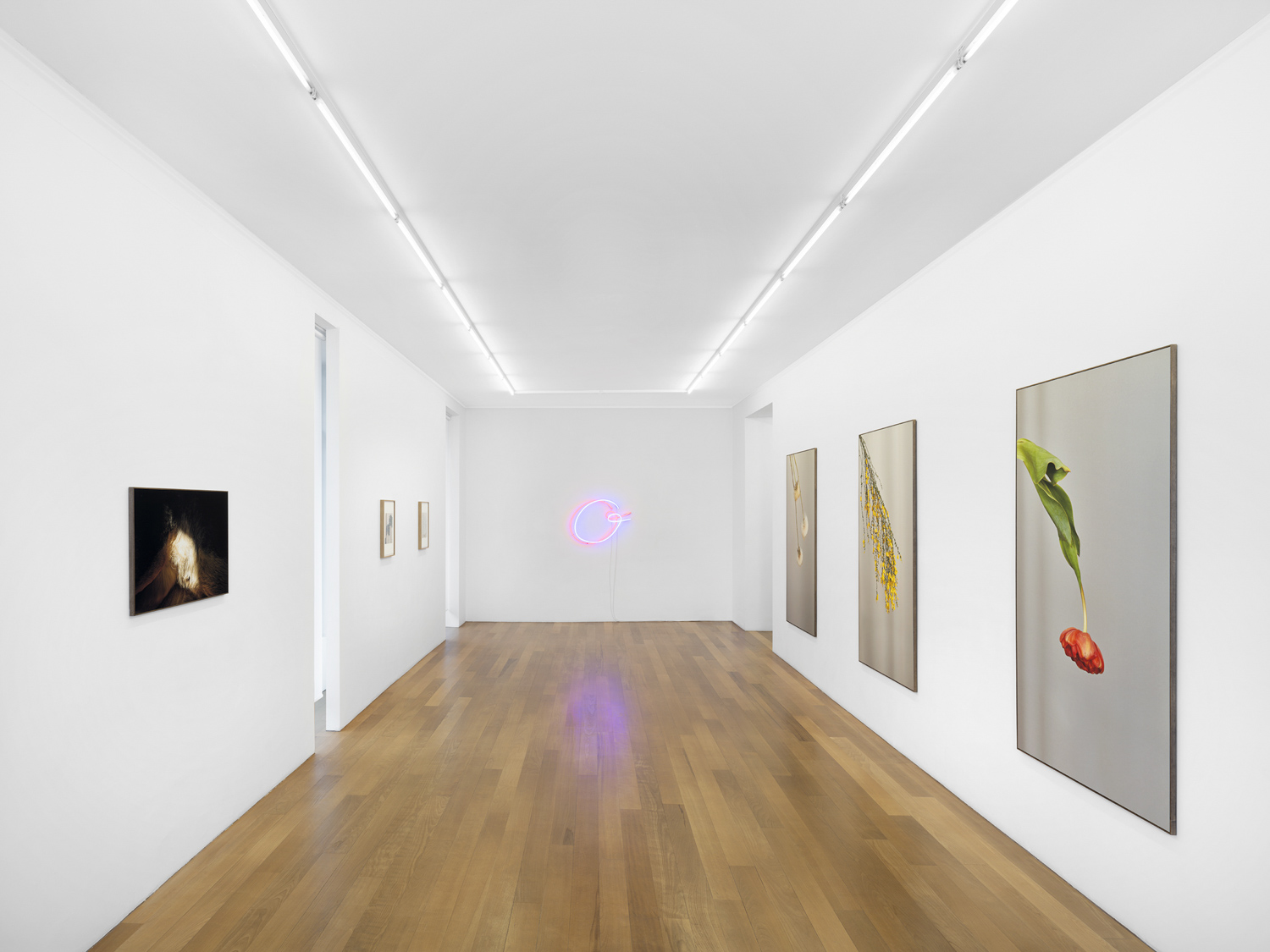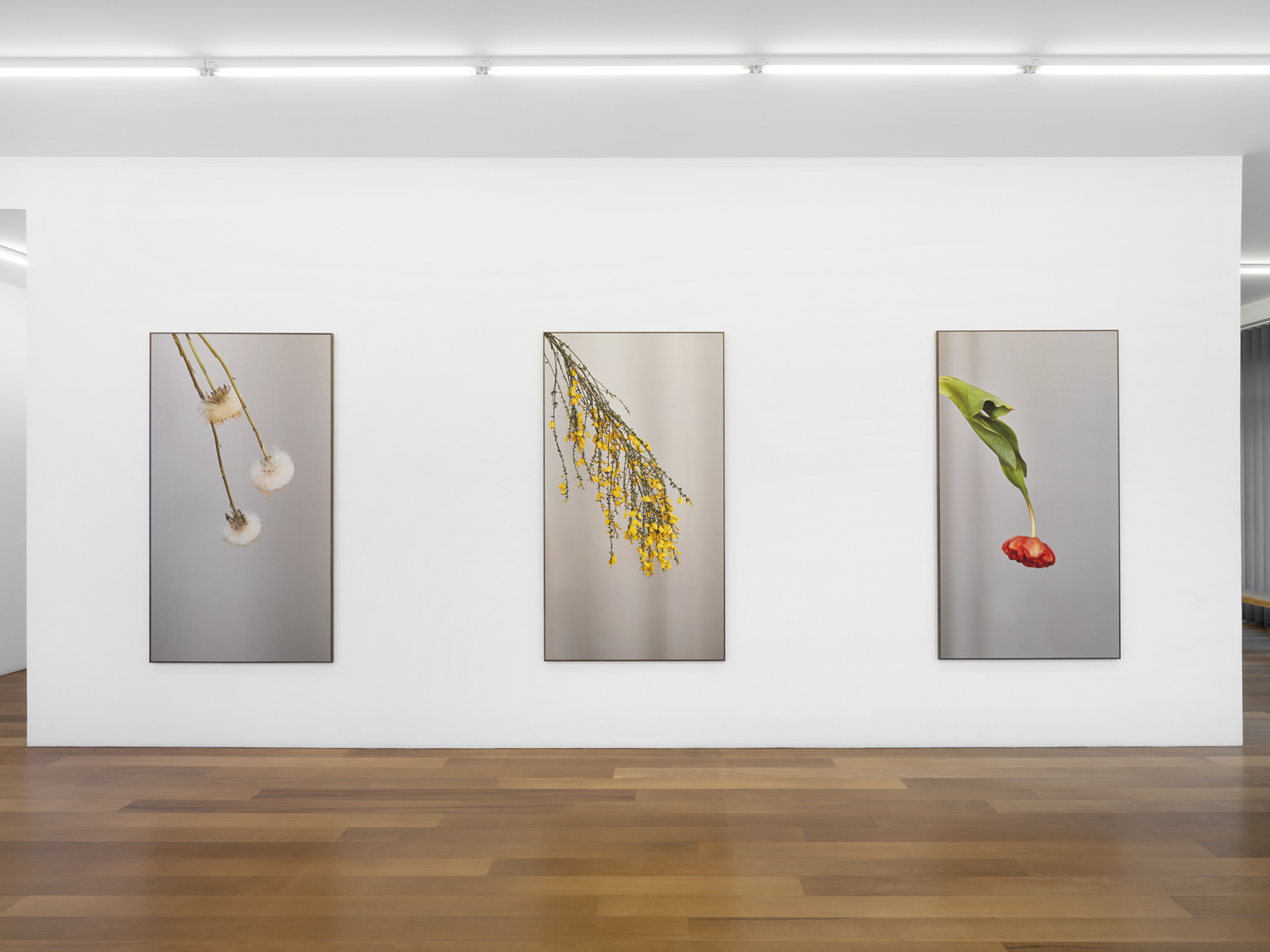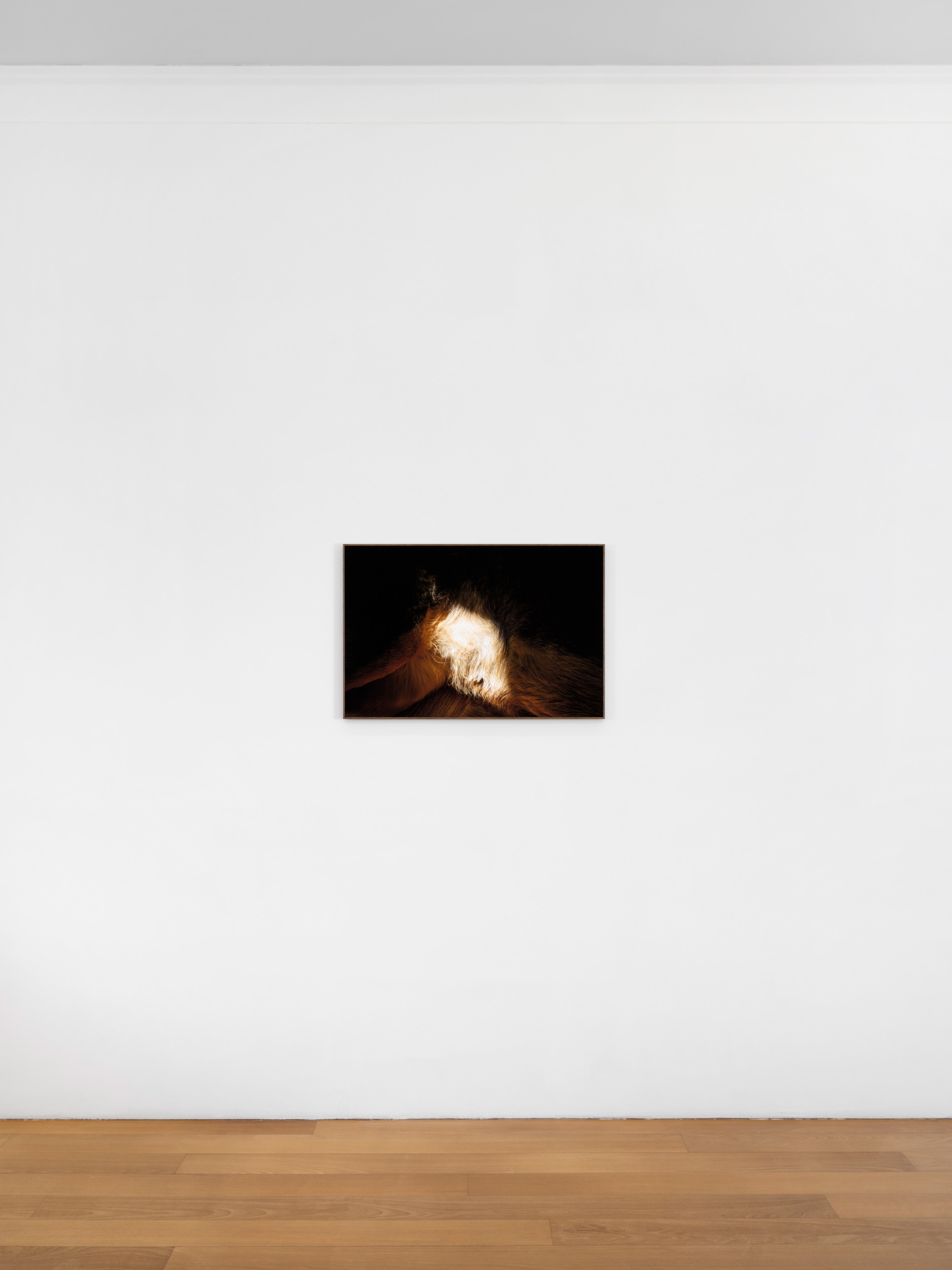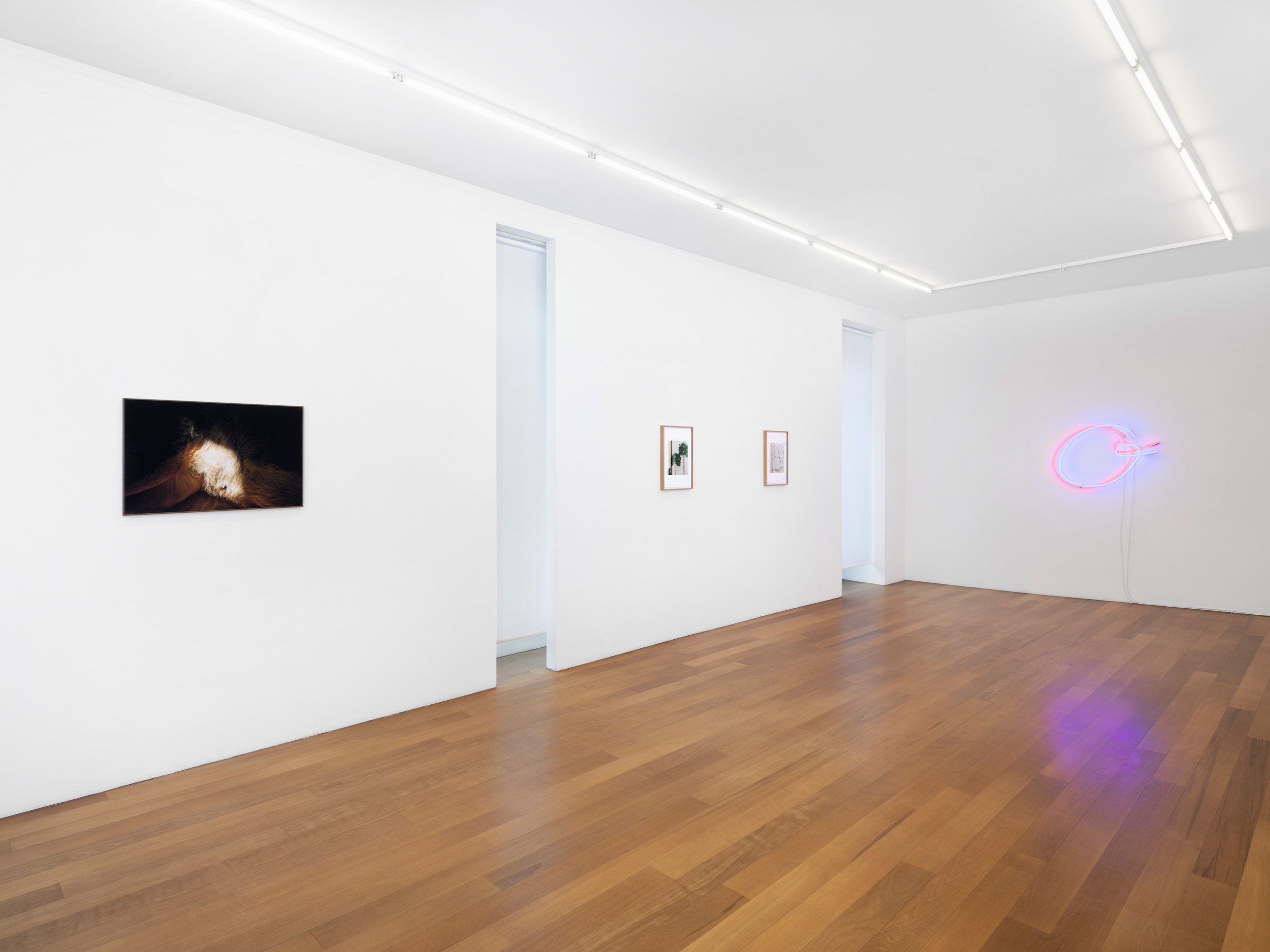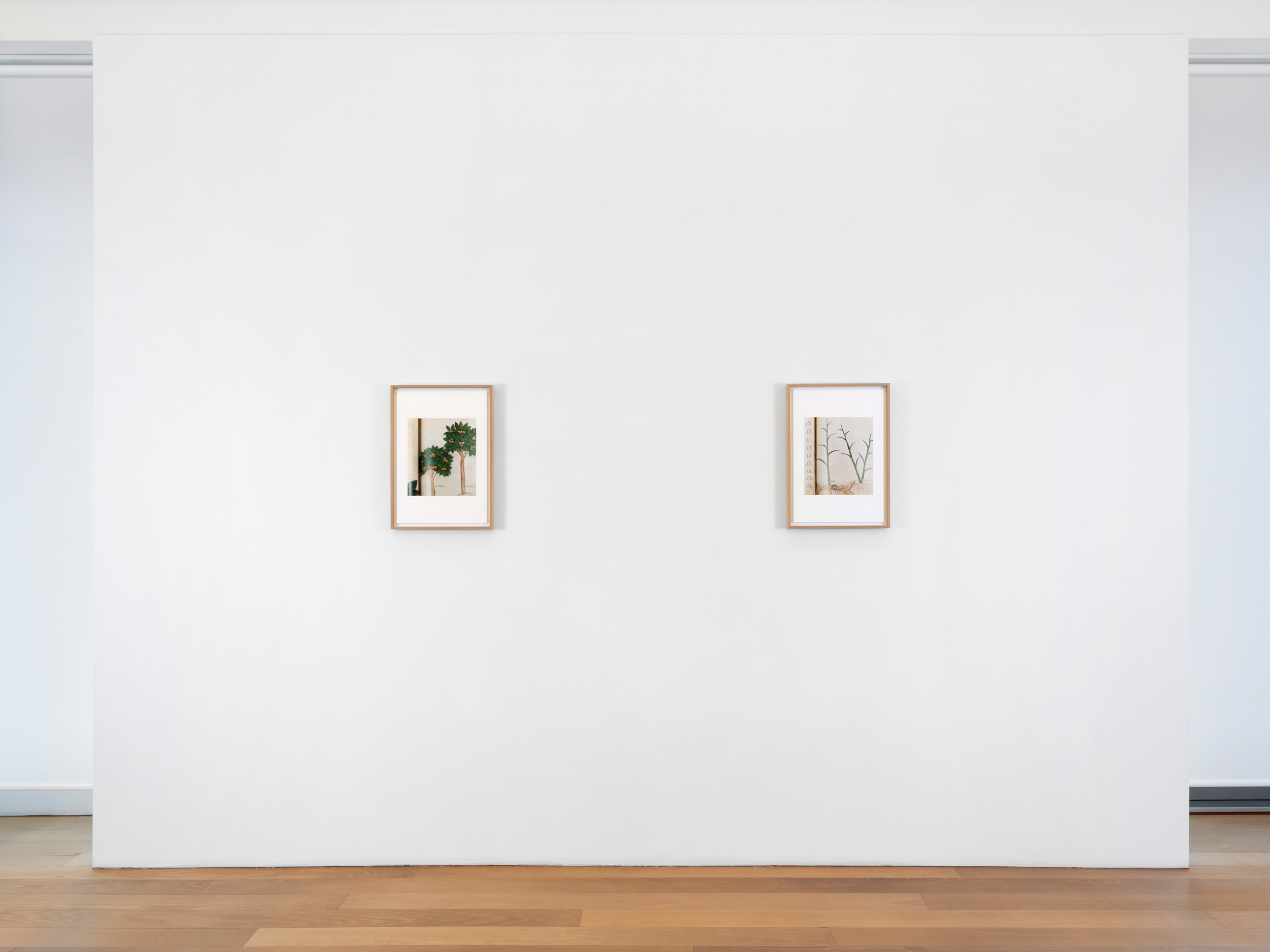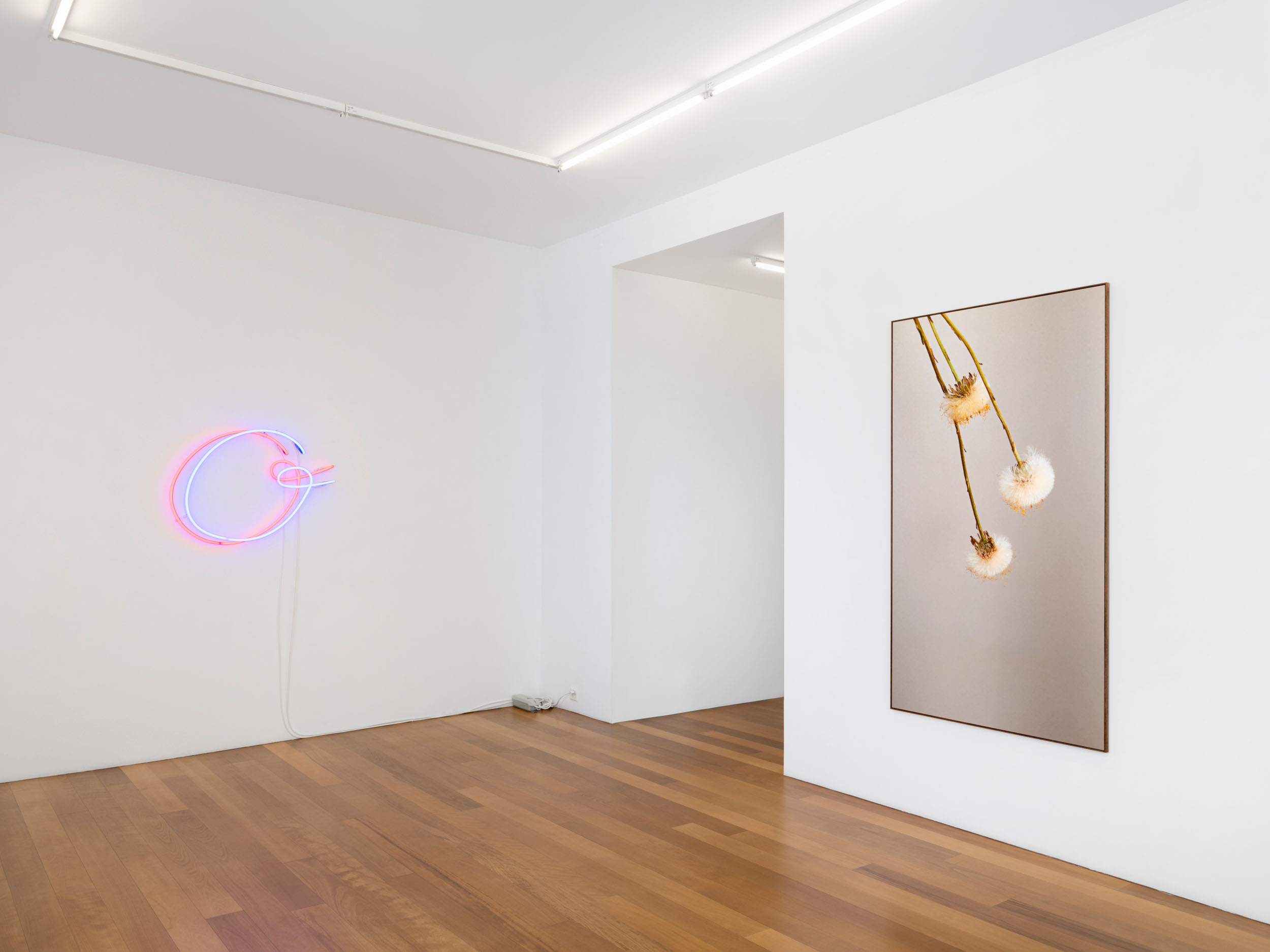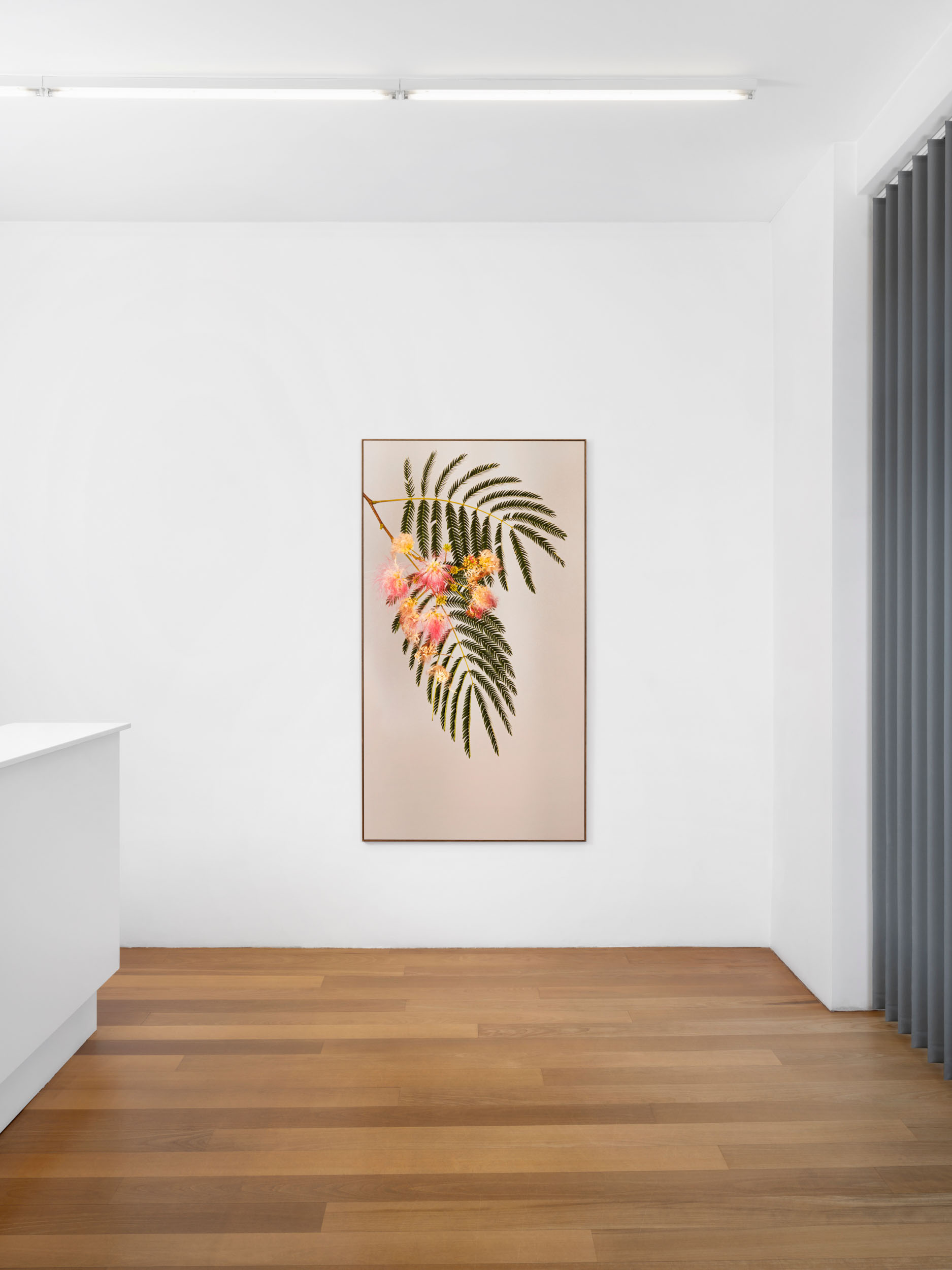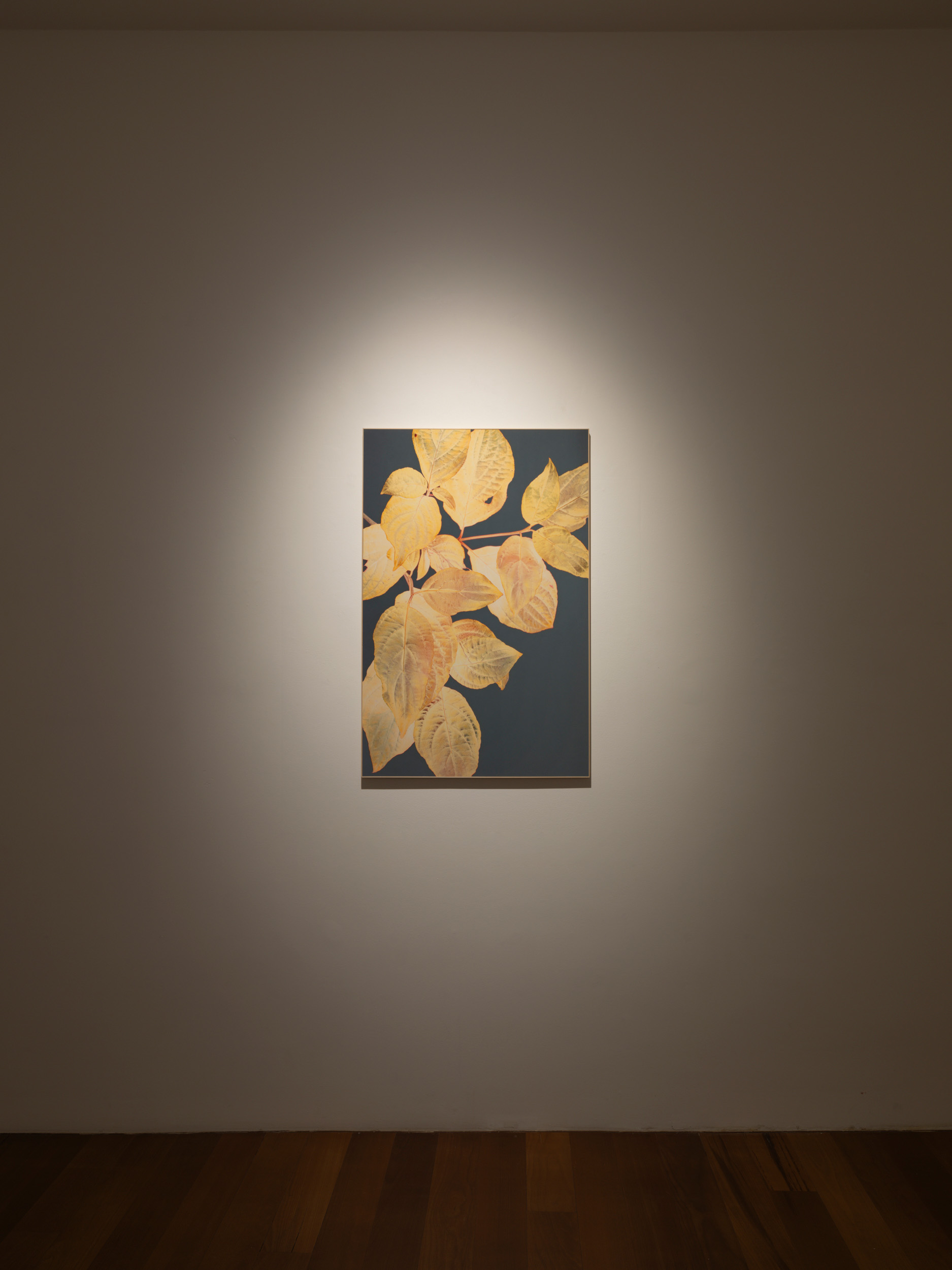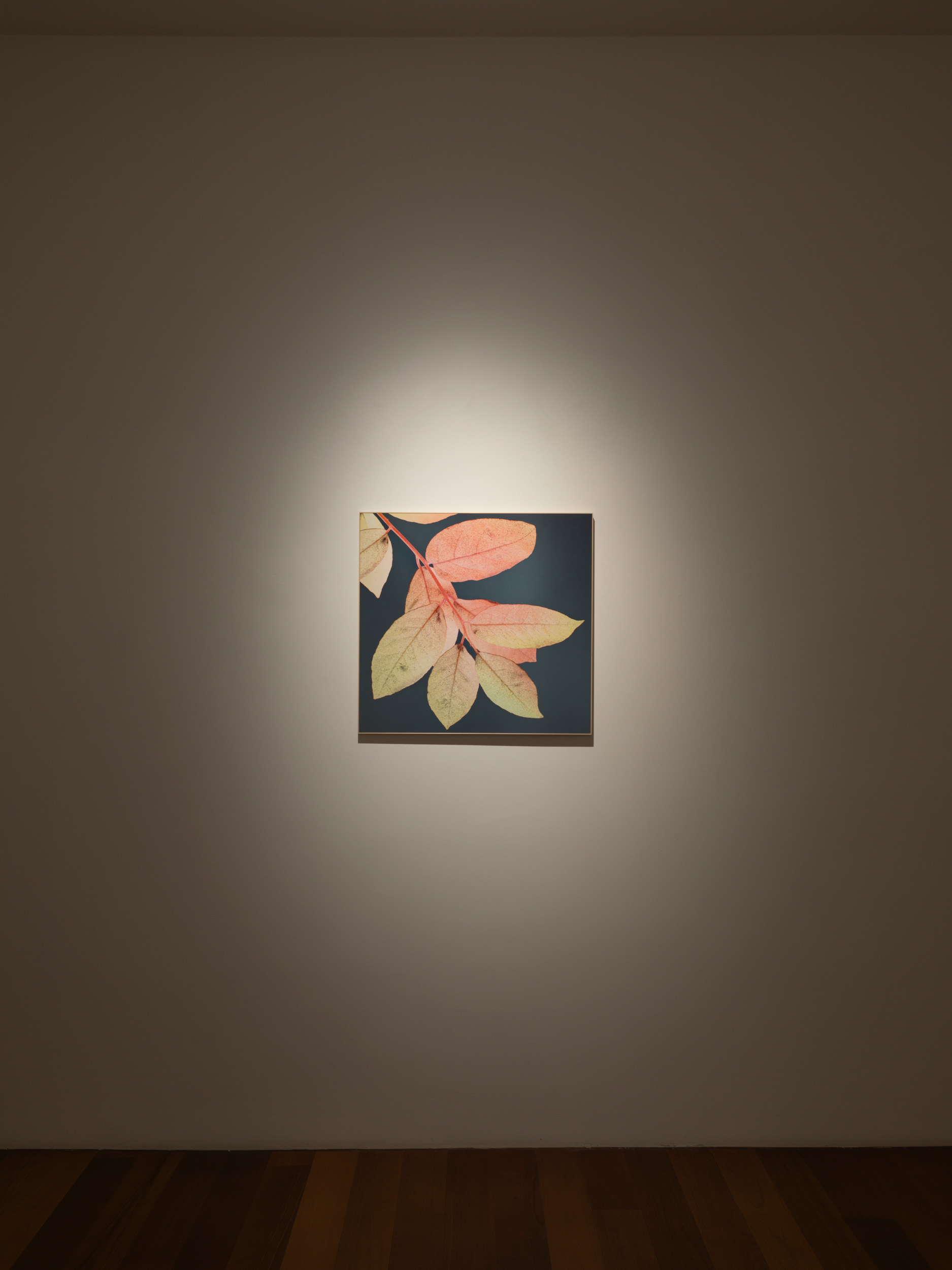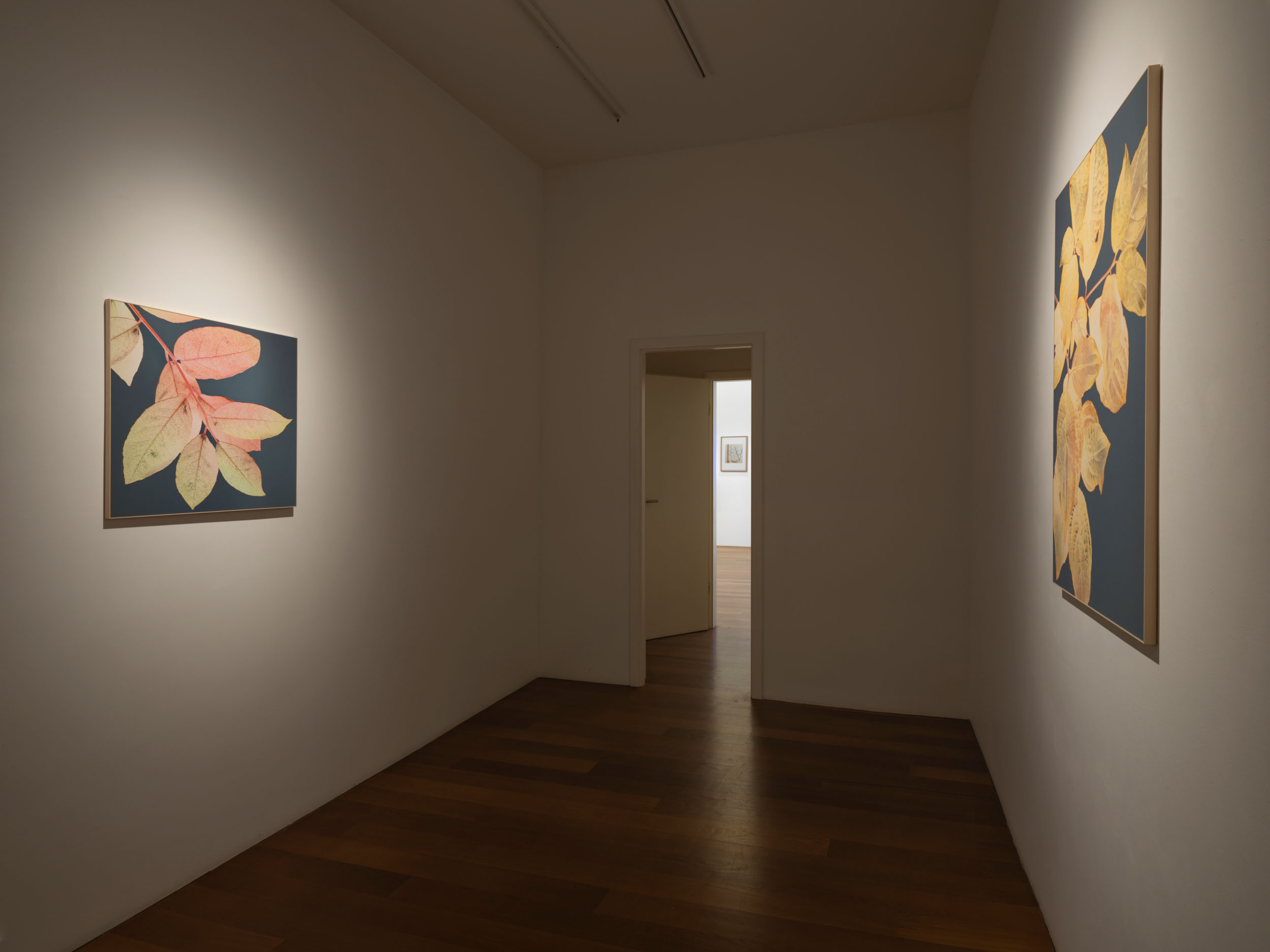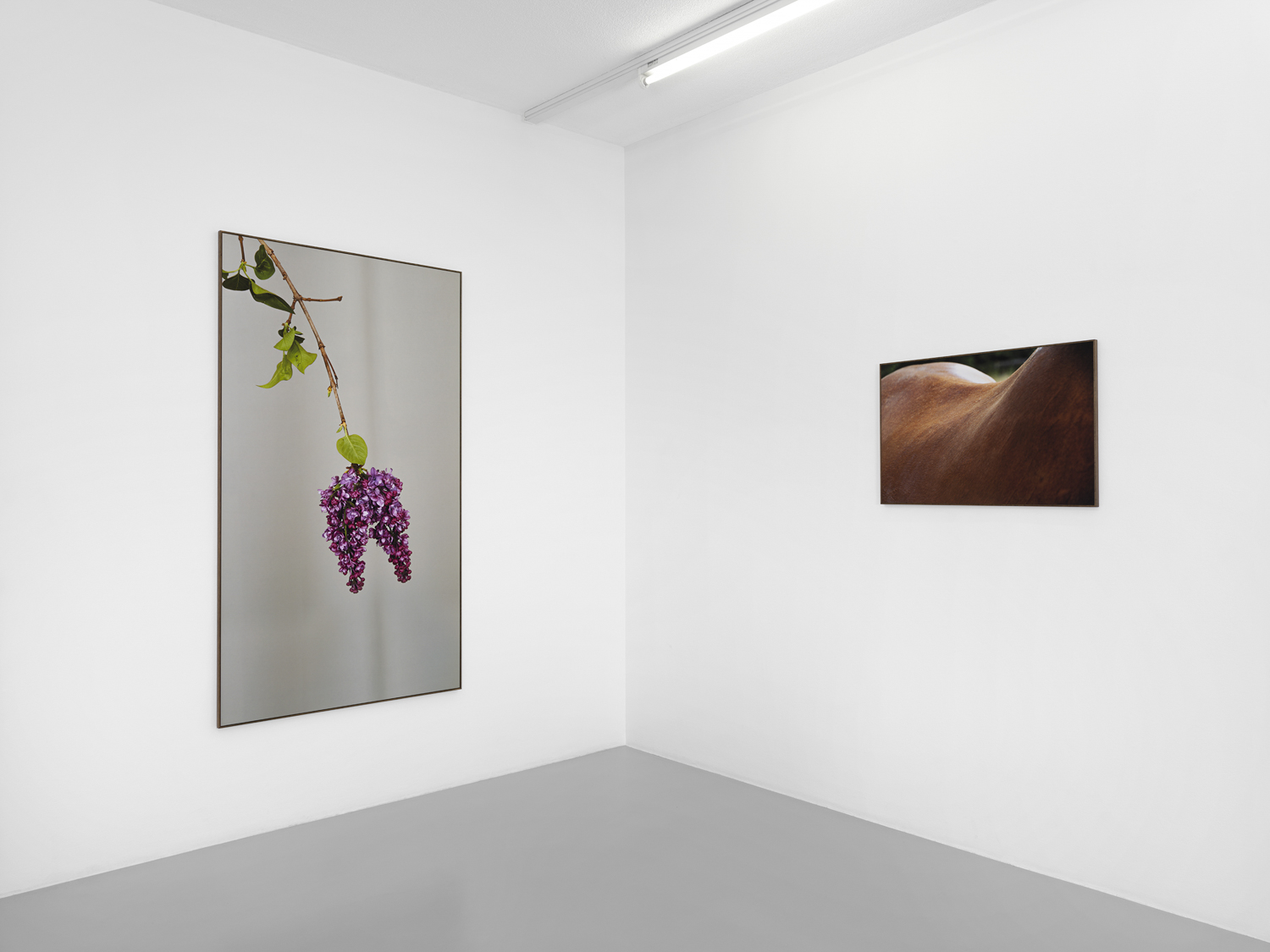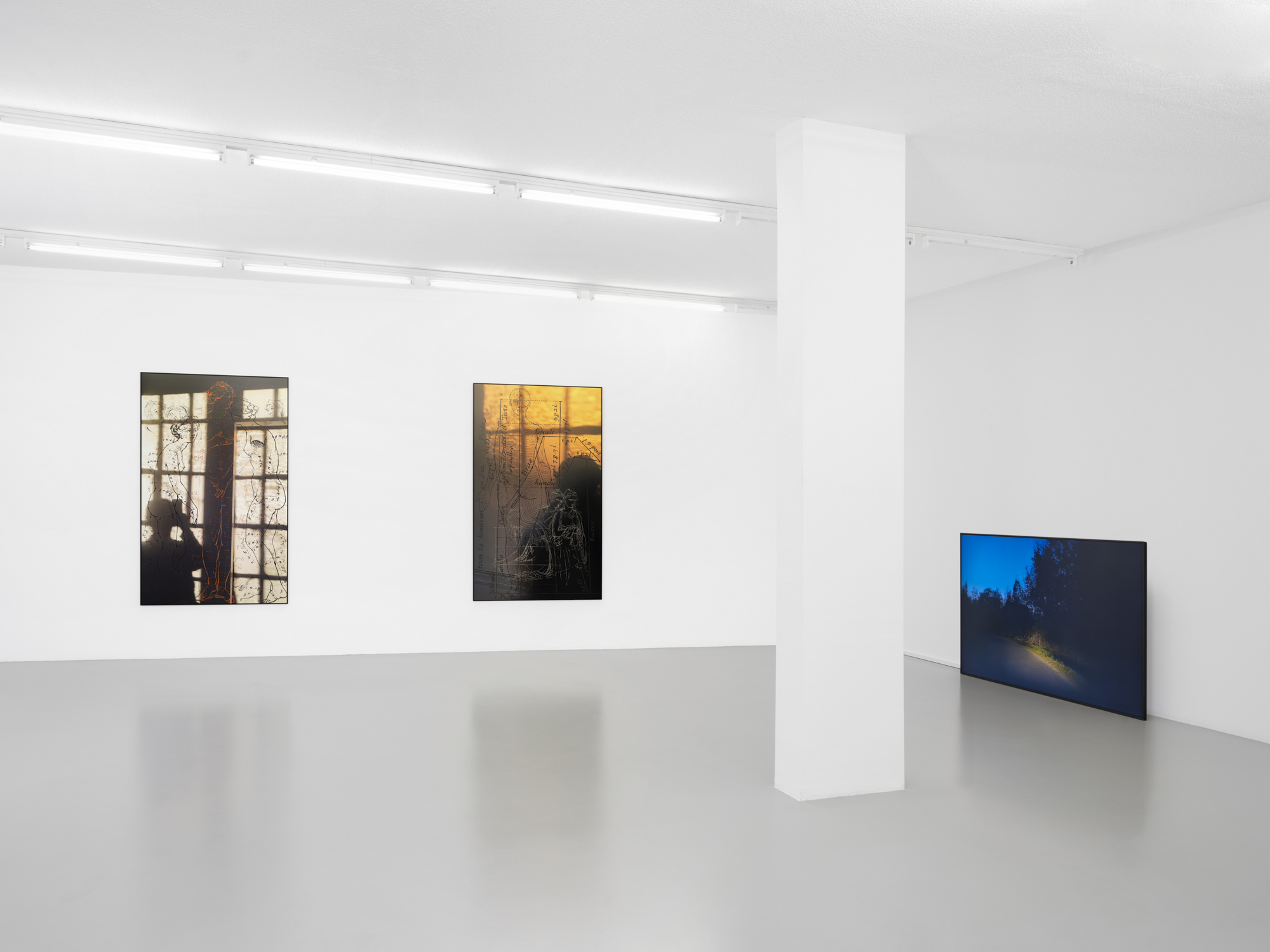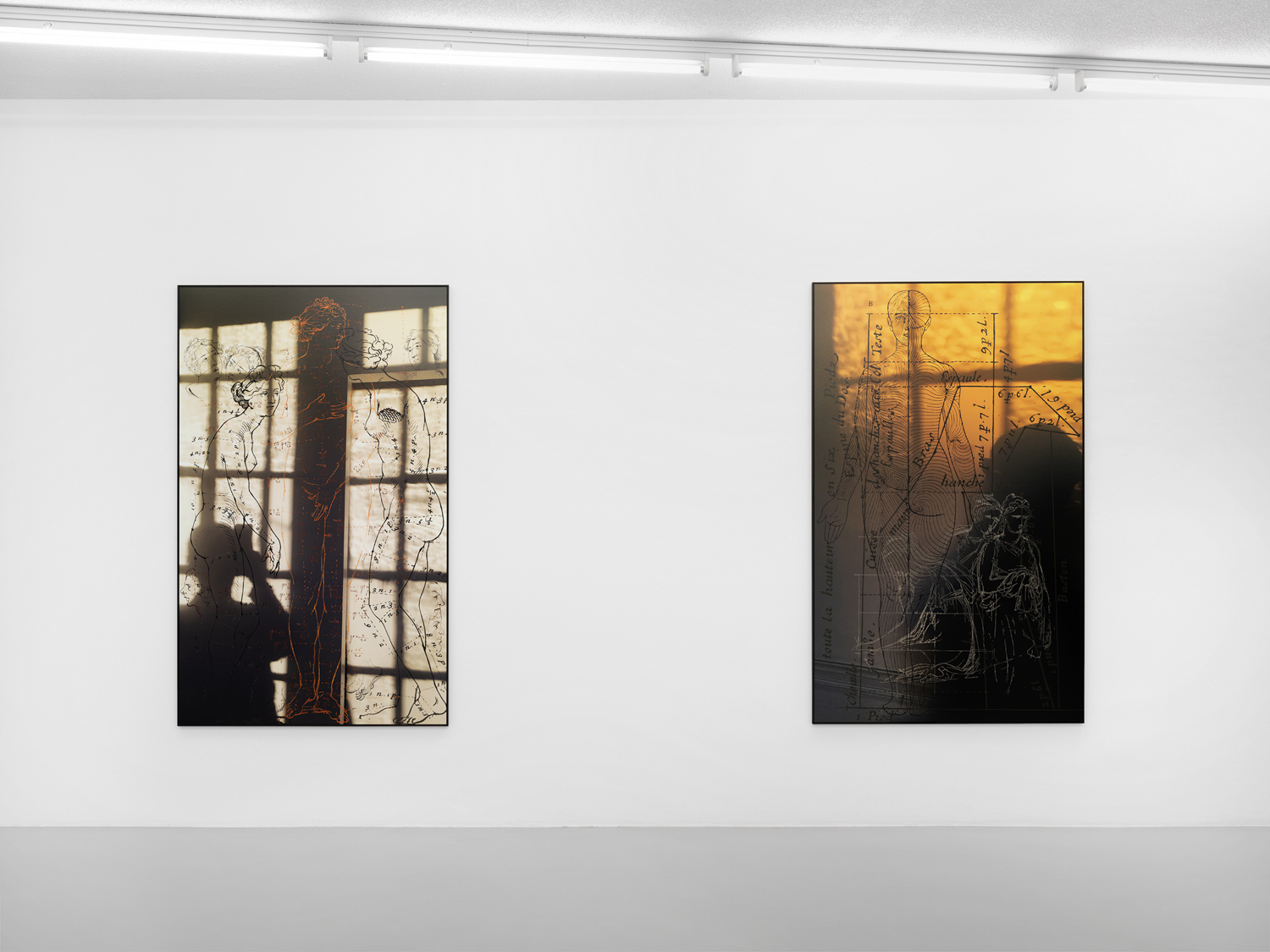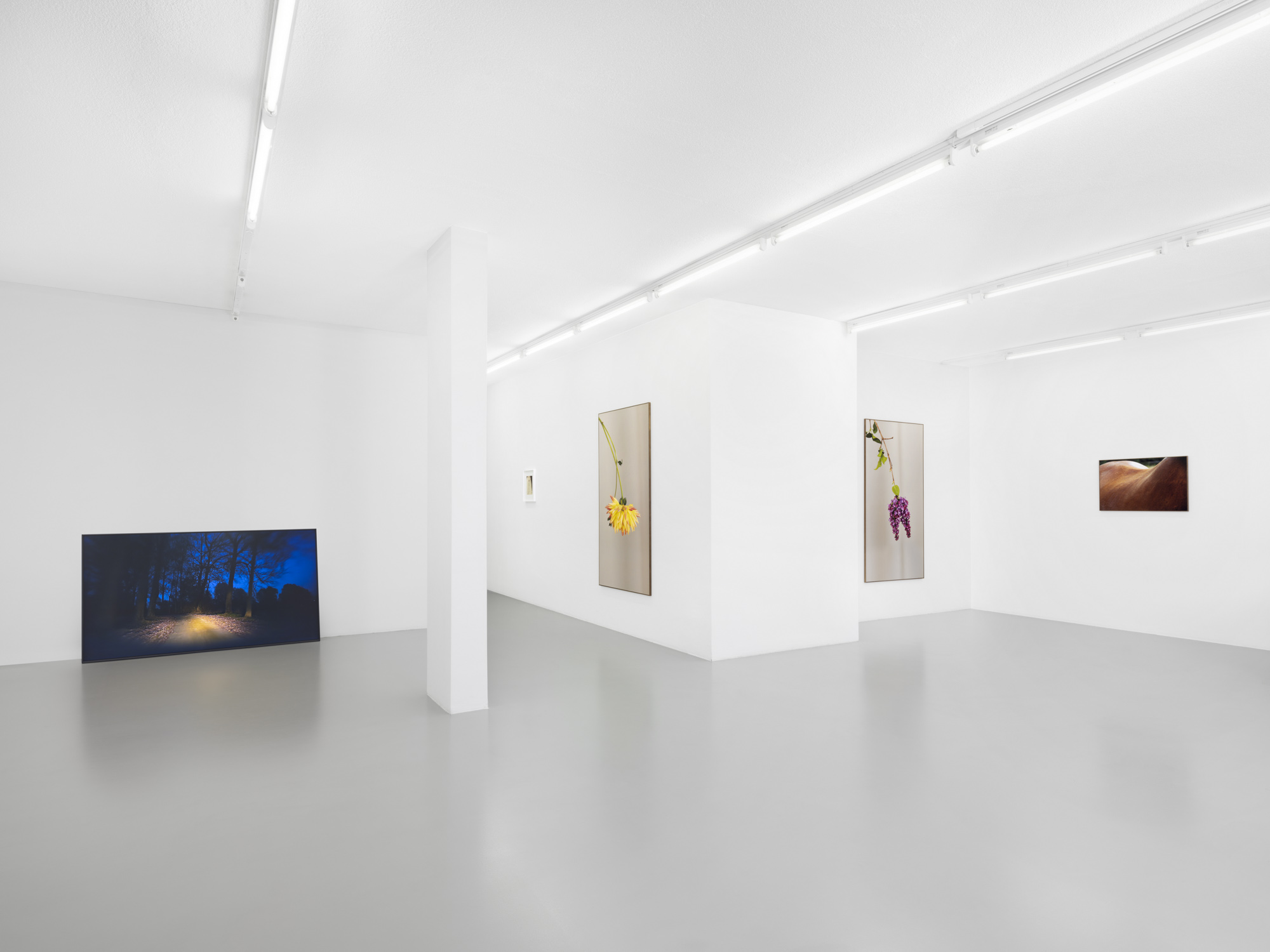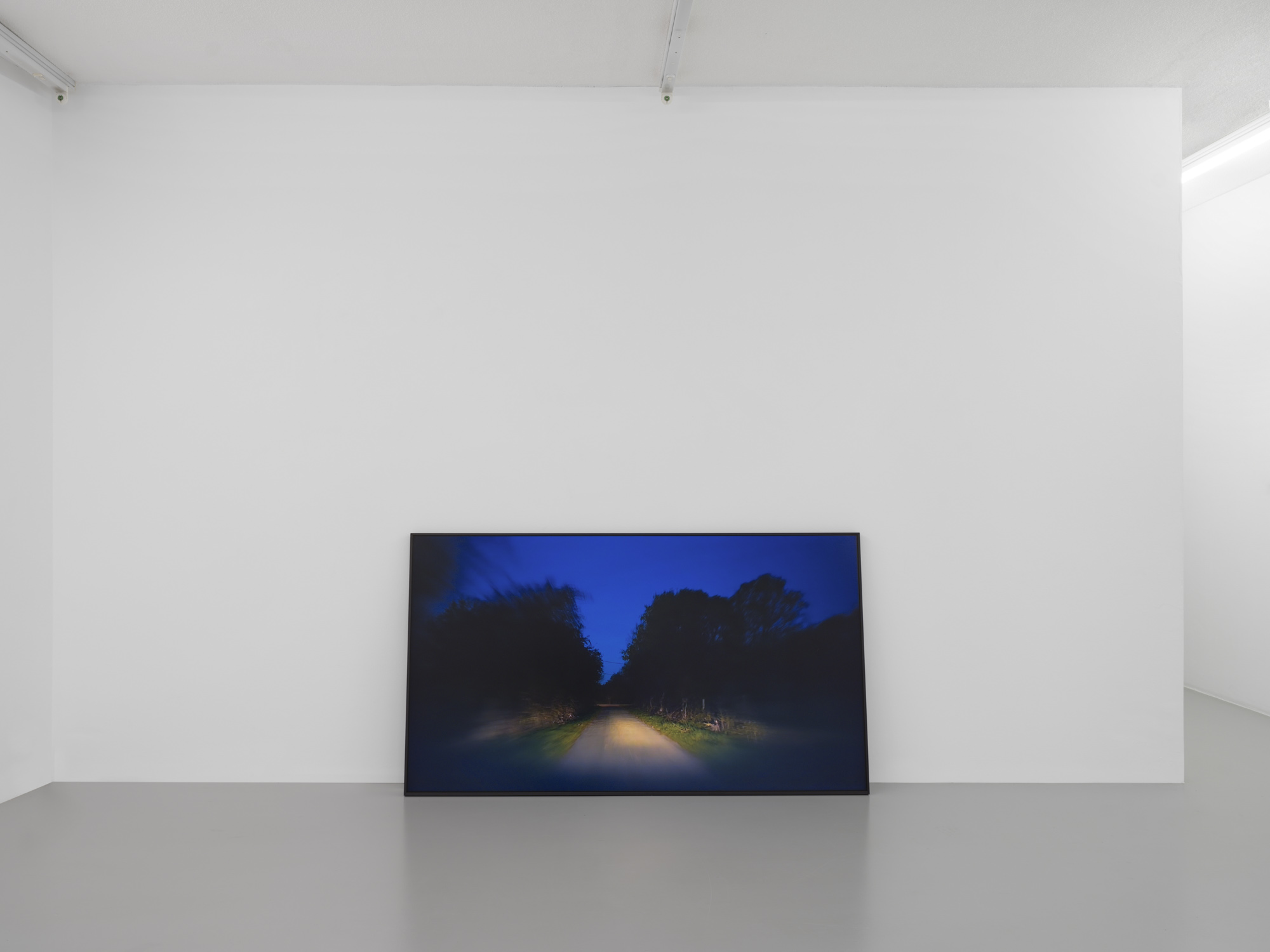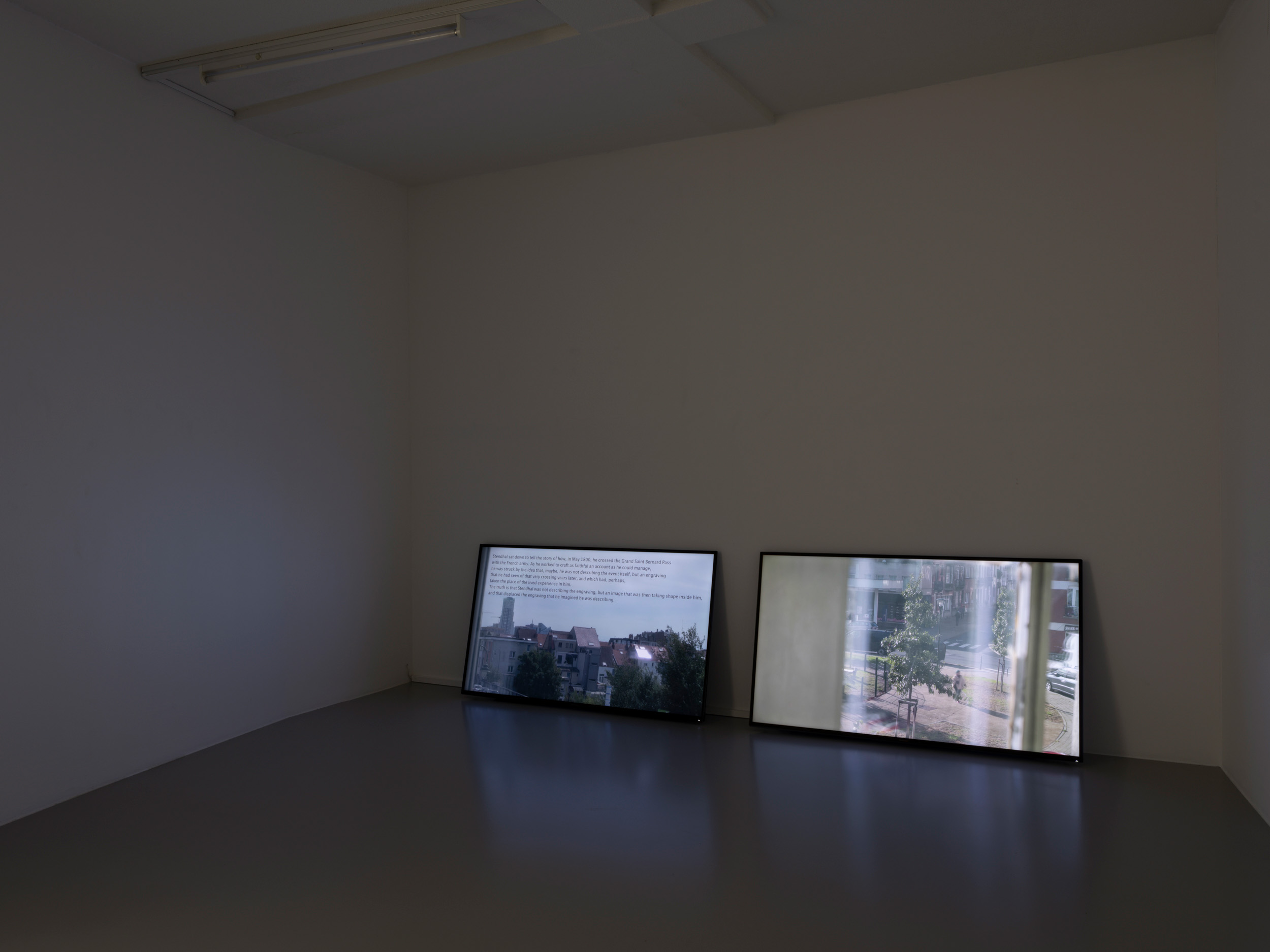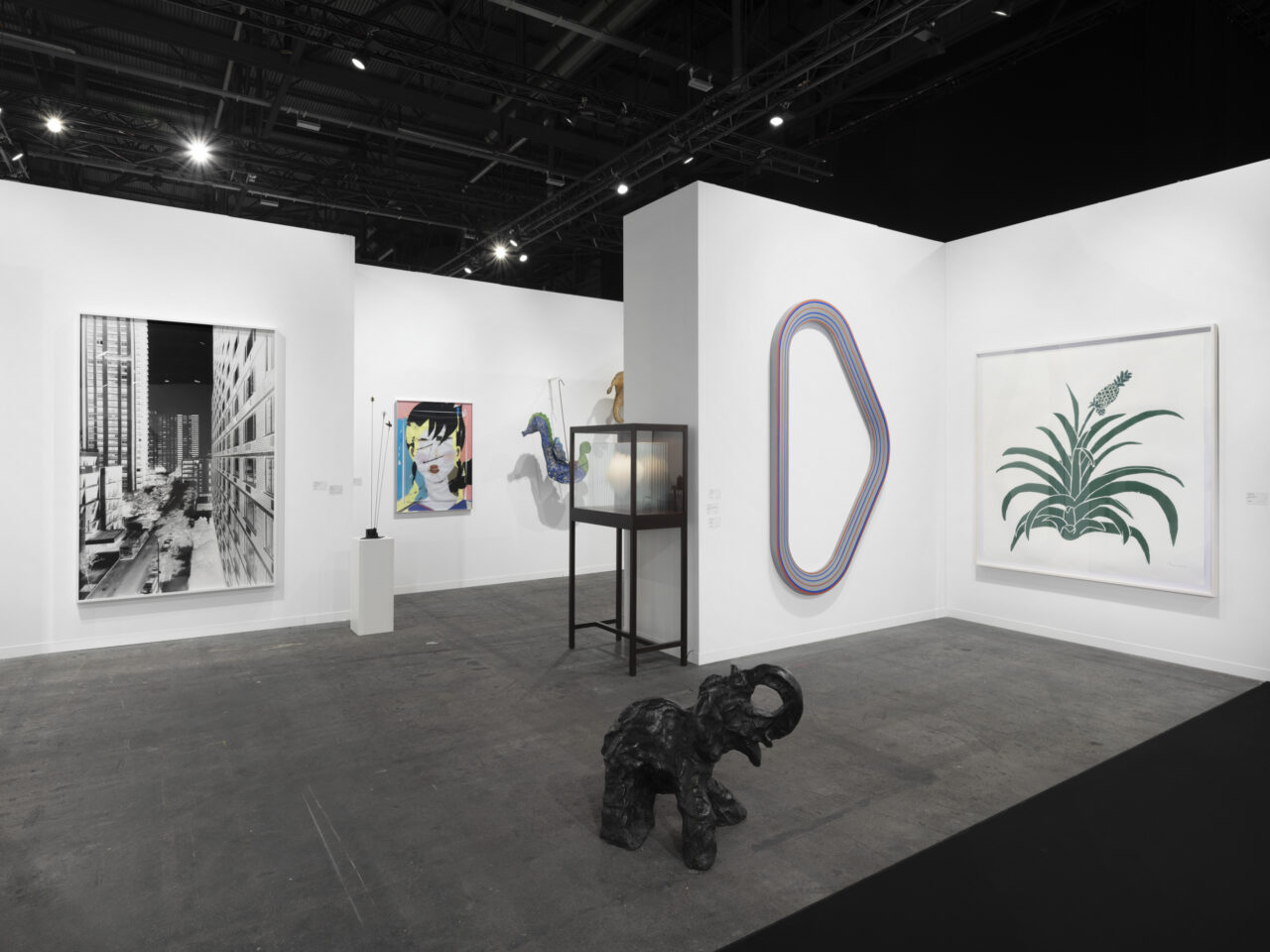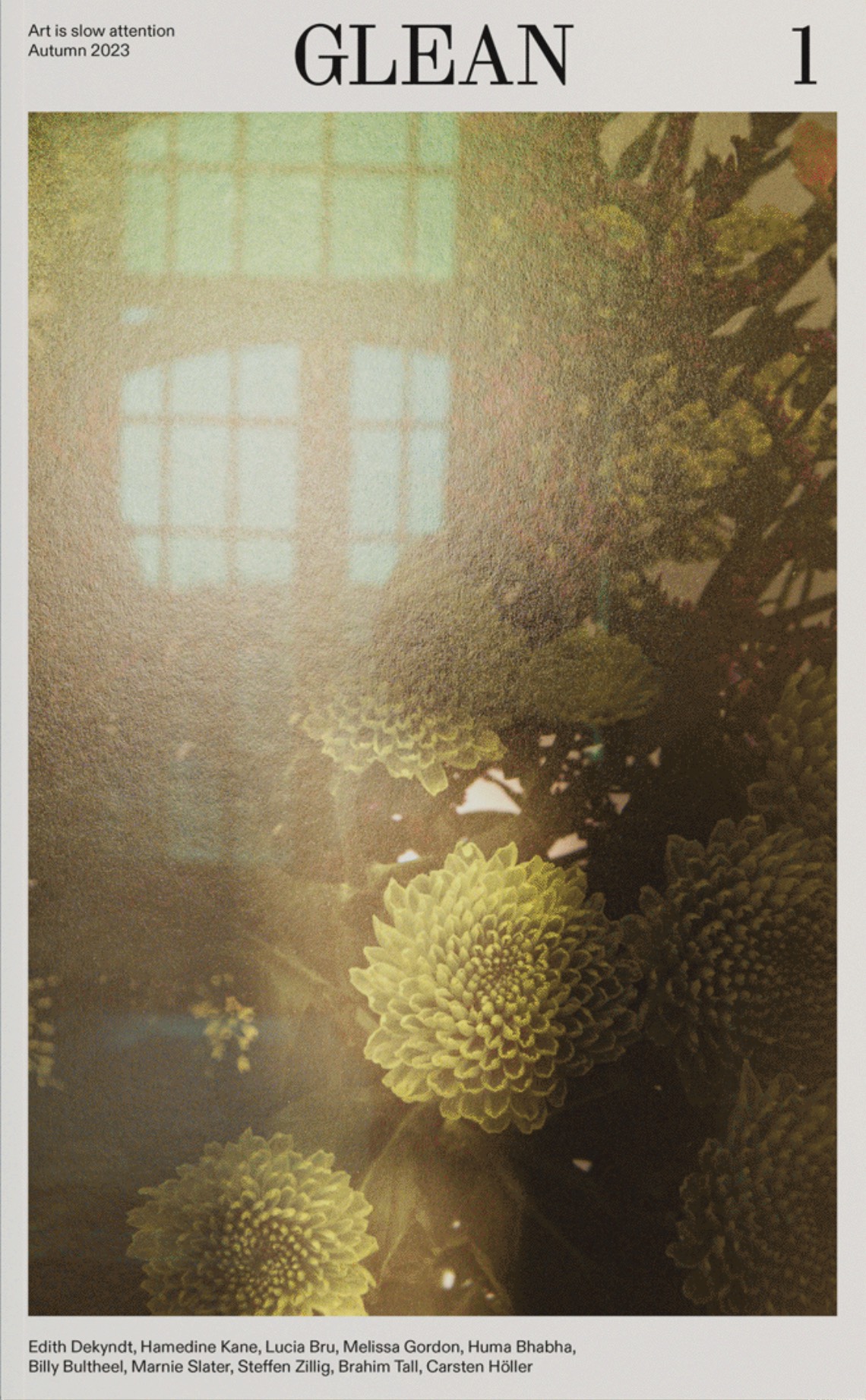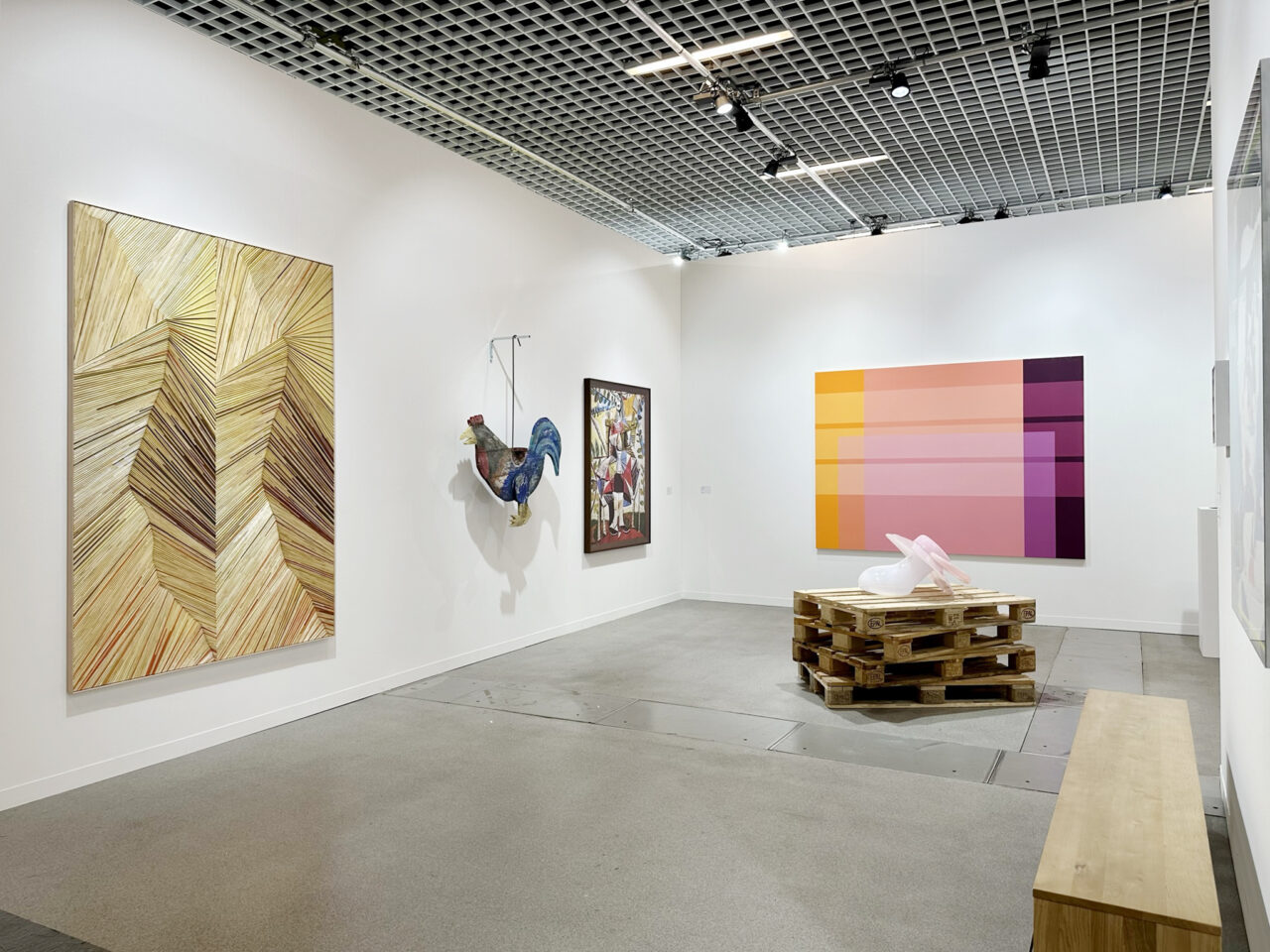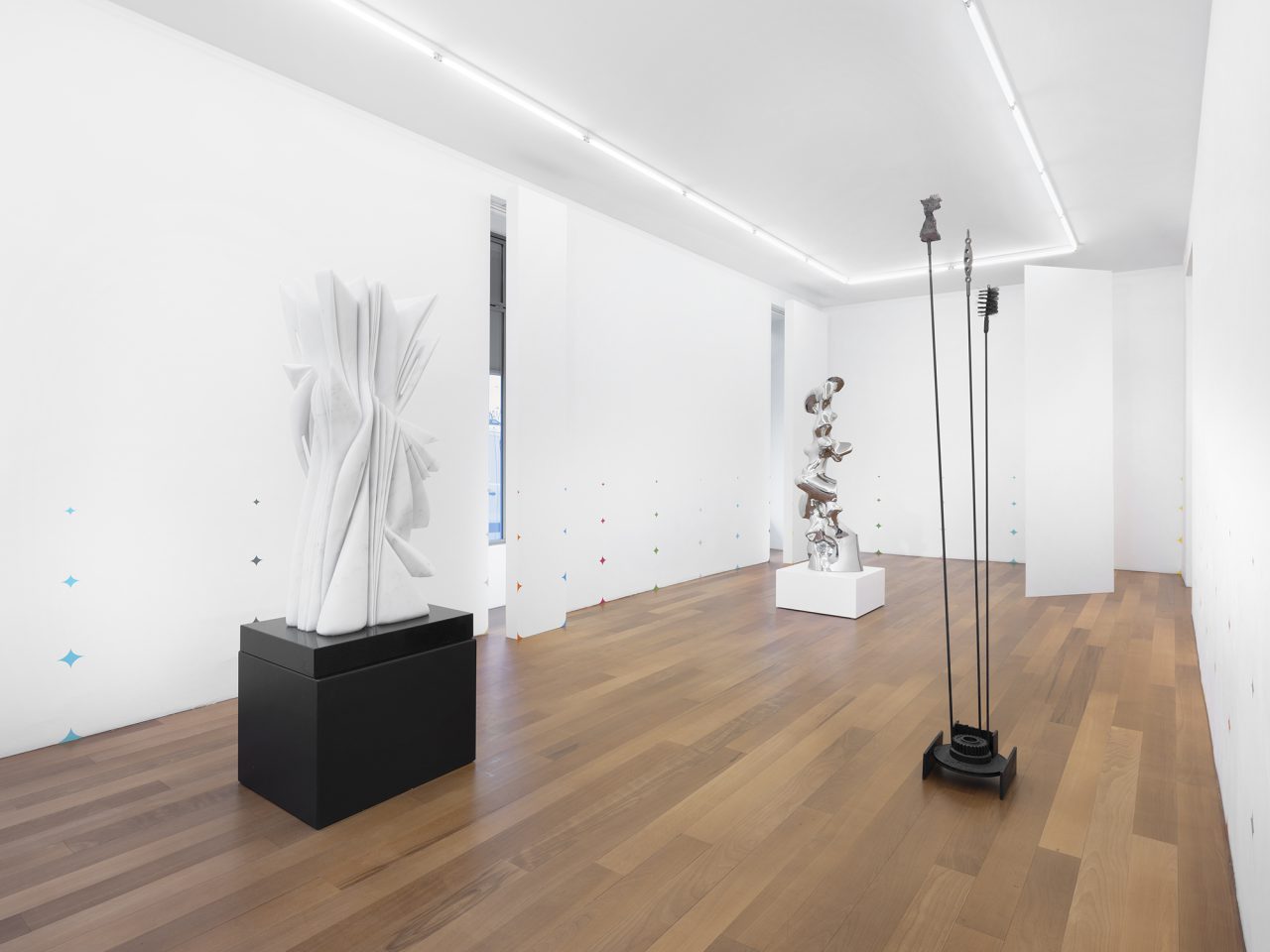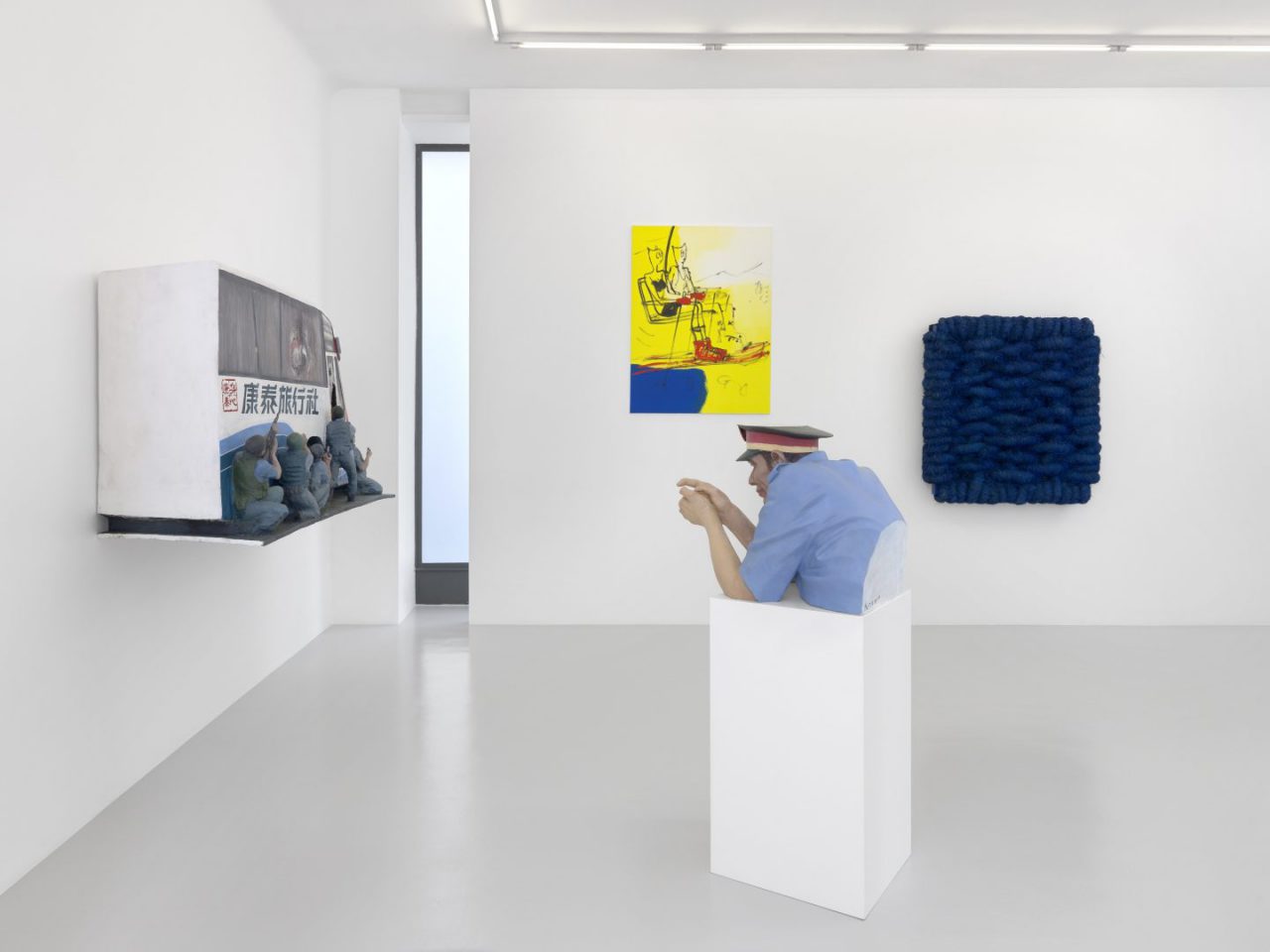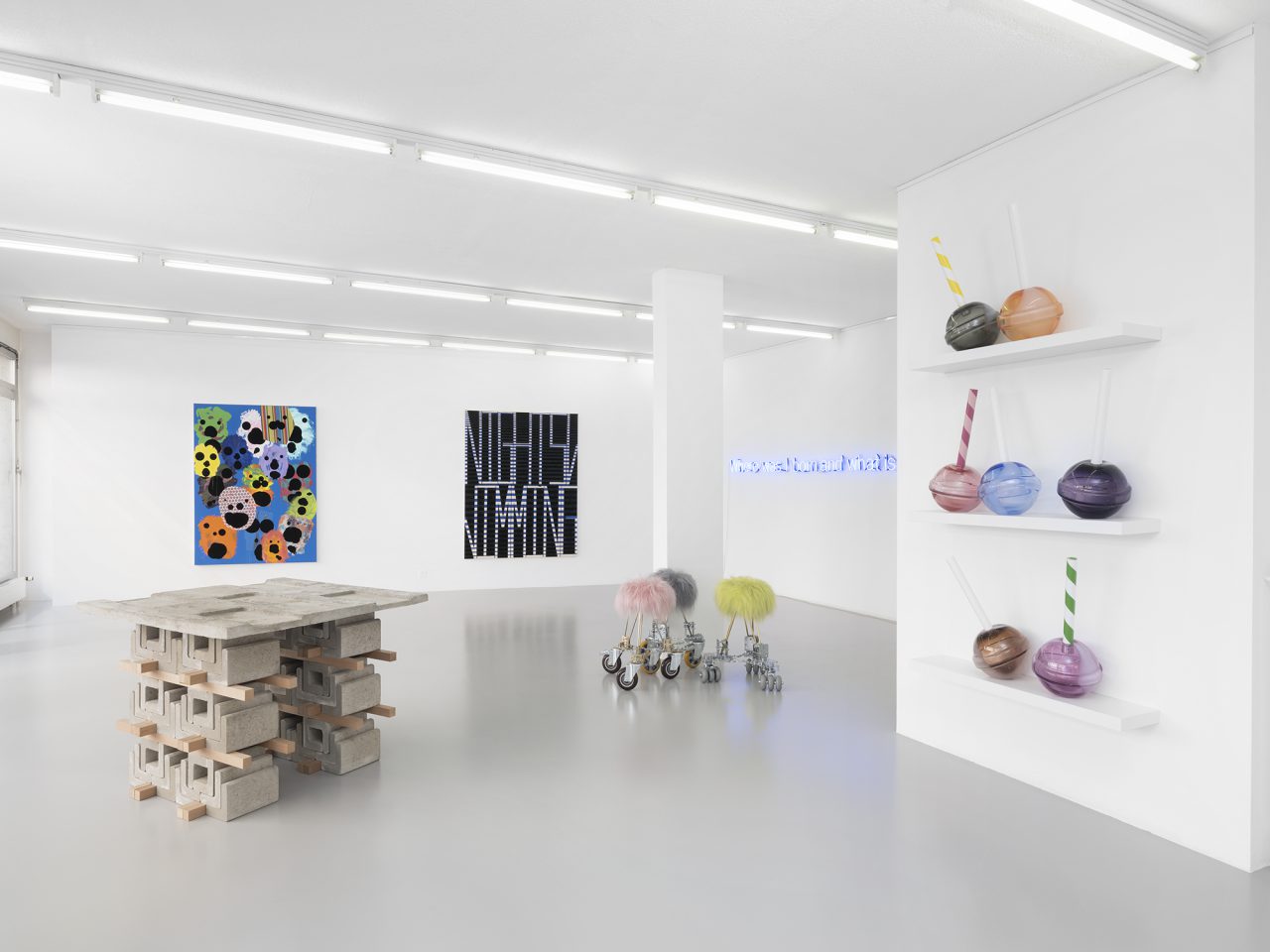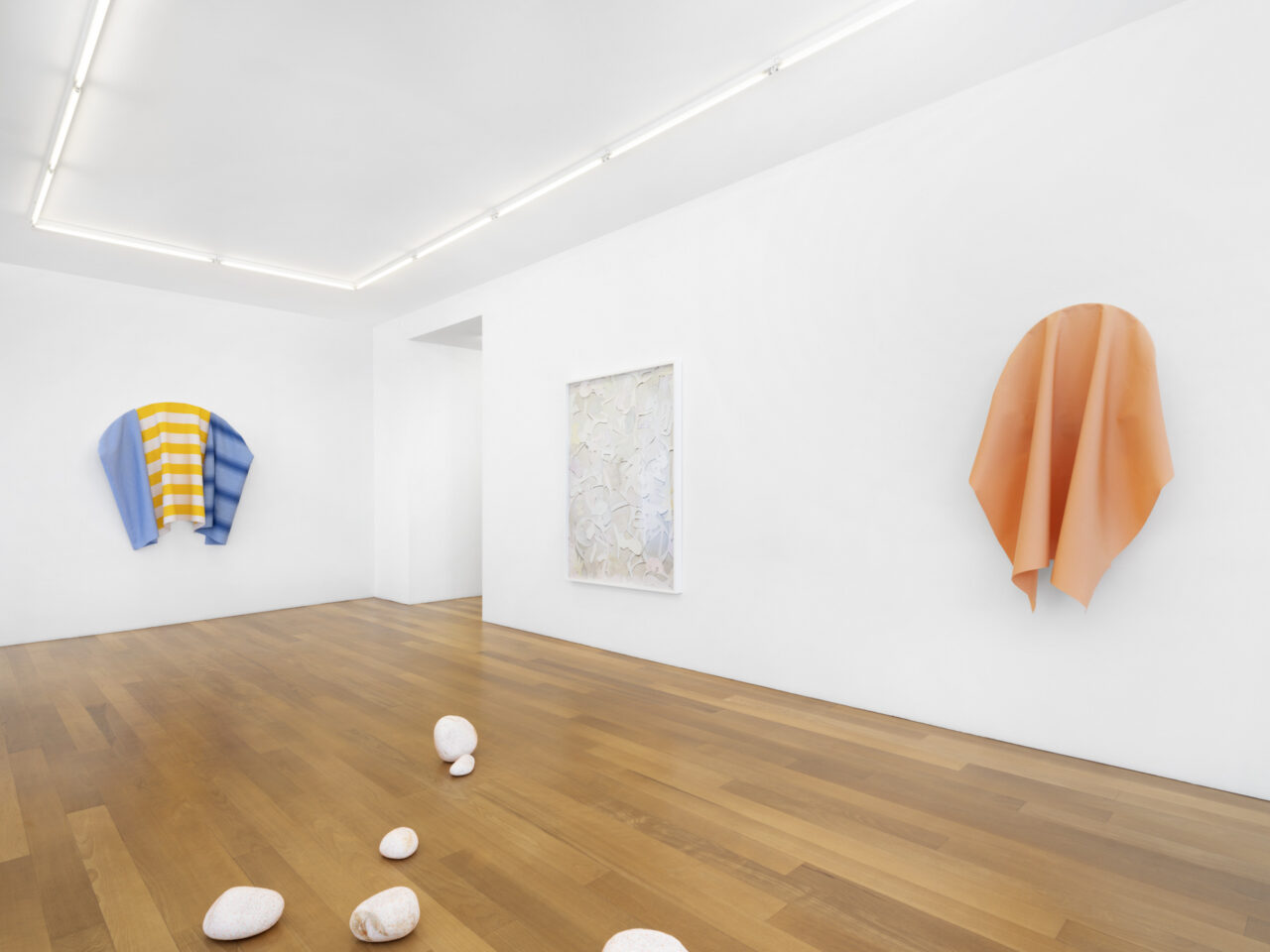Marie José Burki – anatomies d’un monde
Marie José Burki
anatomies d’un monde
18.01.24 → 02.03.24
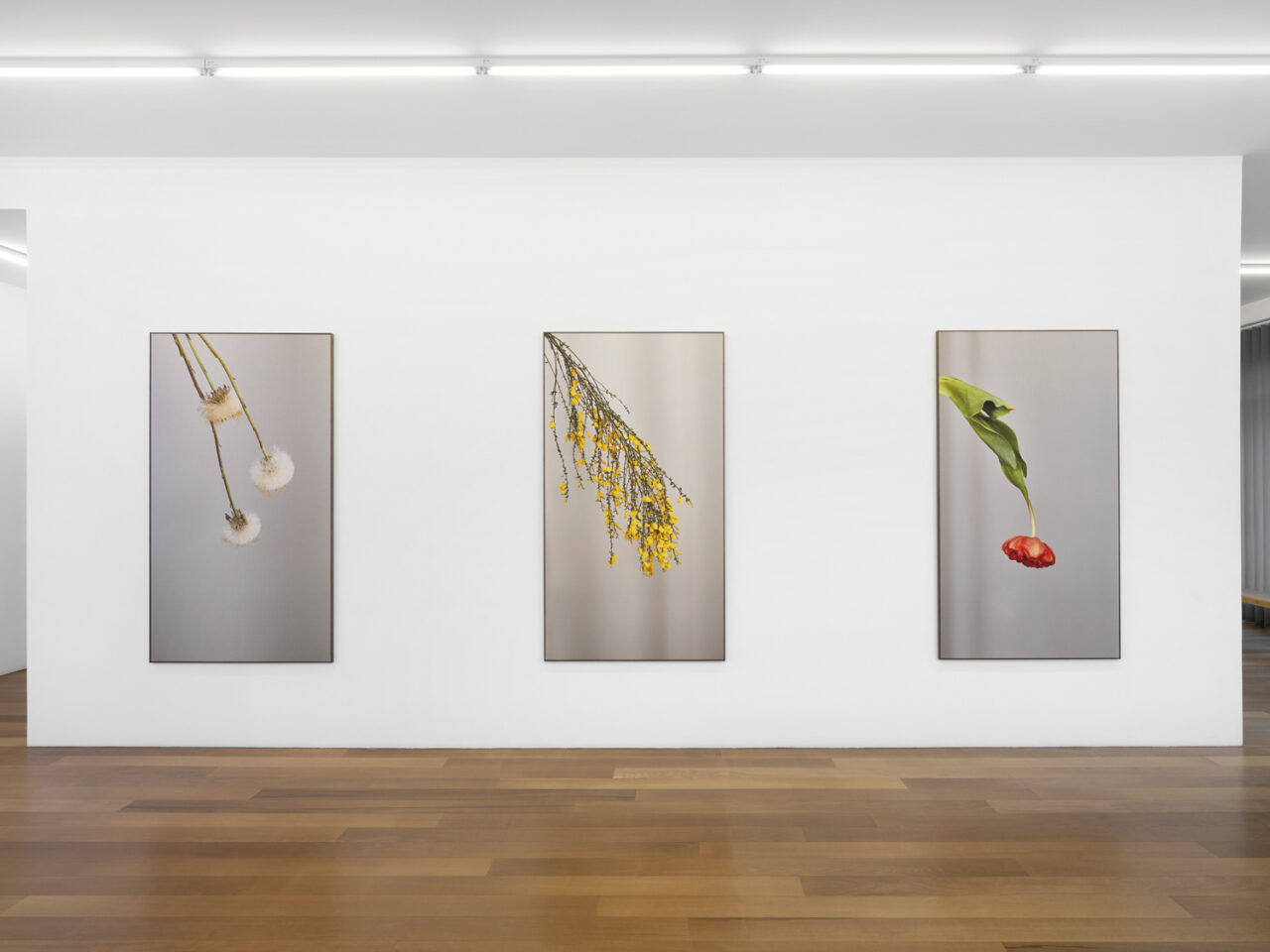
For her second solo show in Geneva, Marie José Burki presents a body of work combining neon, video and photography.
Faced with a world saturated with images, Marie José Burki focuses on precise elements of our world, fixing her gaze on details, suspending time and thus questioning our relationship to things, as when she reverses our point of view in Exposure: Flowers. The Leaves series seems almost unreal, while the Untitled works are more like an inventory, akin to botanical plates. The various forms of representation underpin different approaches to the world, and thus underscore the importance of the role of perception.
“What do we really know? The borage, the dandelion, the tulip: do they evince any interest, whether in the names we have for them, or in our minute descriptions of them? The borage in my garden keeps trying to leave the small patch of soil where I planted it. Its desire to move elsewhere—to flee, perhaps?—gets on my nerves, makes me feel uneasy: what if the borage did want to escape from my garden? But then, what about the other flora in the garden? Like the roses or the columbines? Is it possible that they talk to each other? What do we know about the language of plants? The truth is that all our accumulated knowledge, supplemented and modified, only gives us a very vague idea of it. Set straight and turned upwards to the sky, or standing at attention in our vases, we know them as roses, dahlias, carnations. What are they, though, when upside down? Are they the flowers we think we know so well? Or are they pure forms?
Early in the morning, there are several spiderwebs between the metal bars of the garden gate, or between the lilac branches. By weaving its web, the spider expands the limits of its body in space. It delicately turns a small space into a space of its own—into its room. A room behind the windows, sheltered and serene; outside it, in silence, the world passes by: women and men on the street, alone or in groups, people isolated in their cars, and cyclists zoom by on sunny, rainy, or wind days. As for the trees, they sway gently in the space assigned to them by city planners. A room, here, yesterday, today. Elsewhere, long ago, navigators and explorers, some of them geographers and others naturalists, explored the world, invented maps and territories, and brought back the dahlia, the borage, and other plants growing in my garden today.”*
The plant world is matched by the animal world, with details of a horse’s torso, close-ups of a dog’s hair and anatomical plates bathed in light.
“Today, an American philosopher writes that orthodontics, correction, aesthetic and functional optimization for perfect jaws, is modelled on ancient sculpture, Venus and other goddesses. Conformity to a feminine profile using restraints and braces, an ideal of proportion modelled on an idea of woman, a woman who never existed. A question of proportions, harmony. Body figures. Bodies measured, squared, deciphered. Until the invention of photography, drawing studied and taught the figures of the human body, practices that put the body into images, that told the story of the body through strokes and time. Accumulated, juxtaposed, confronted, they jostle against a photographic trace, the shadow of a body.
A question of correction, of proportion. Without losing contact with the paper, the pencil draws more than it writes. Later on, the craftsman bends the glass tube, following the drawing made by this trace. The handwriting is first transcribed by scanning, then enlarged, and then retraced by the craftsman. The steps succeed and build on one another until they make a bright and colorful neon. In one and the same movement, the neon both restores and betrays the movement of the hand. Writing, tracing, maybe even communicating a little.
A red or blue neon, a slightly bent glass tube. And, suddenly, a sign appears, a letter: O. But O is also the shape formed by the mouth when surprised: O. O for a round that is not quite round, a round that is not round.”*
* Marie José Burki, November 2023
Exhibition views
-
![Xippas-MarieJoséBurki-JulienGremaud-001R-web-site]()
Marie Jose Burki
anatomies d'un monde
Exhibition view, Xippas Geneva, 2024
Photo: Julien Gremaud -
![Xippas-MarieJoséBurki-JulienGremaud-012R-web-site]()
Marie Jose Burki
anatomies d'un monde
Exhibition view, Xippas Geneva, 2024
Photo: Julien Gremaud -
![Xippas-MarieJoséBurki-JulienGremaud-025R-web]()
Marie Jose Burki
anatomies d'un monde
Exhibition view, Xippas Geneva, 2024
Photo: Julien Gremaud -
![Xippas-MarieJoséBurki-JulienGremaud-006R-web]()
Marie Jose Burki
anatomies d'un monde
Exhibition view, Xippas Geneva, 2024
Photo: Julien Gremaud -
![Xippas-MarieJoséBurki-JulienGremaud-015R-web]()
Marie Jose Burki
anatomies d'un monde
Exhibition view, Xippas Geneva, 2024
Photo: Julien Gremaud -
![Xippas-MarieJoséBurki-JulienGremaud-066R-web]()
-
![Xippas-MarieJoséBurki-JulienGremaud-062R-web]()
-
![Xippas-MarieJoséBurki-JulienGremaud-029-web]()
Marie Jose Burki
anatomies d'un monde
Exhibition view, Xippas Geneva, 2024
Photo: Julien Gremaud -
![Xippas-MarieJoséBurki-JulienGremaud-030-web]()
Marie Jose Burki
anatomies d'un monde
Exhibition view, Xippas Geneva, 2024
Photo: Julien Gremaud -
![Xippas-MarieJoséBurki-JulienGremaud-034-web]()
-
![Xippas-MarieJoséBurki-JulienGremaud-077R-web-site]()
Marie Jose Burki
anatomies d'un monde
Exhibition view, Xippas Geneva, 2024
Photo: Julien Gremaud -
![Xippas-MarieJoséBurki-JulienGremaud-100R-web]()
Marie Jose Burki
anatomies d'un monde
Exhibition view, Xippas Geneva, 2024
Photo: Julien Gremaud -
![Xippas-MarieJoséBurki-JulienGremaud-093R-web-site]()
Marie Jose Burki
anatomies d'un monde
Exhibition view, Xippas Geneva, 2024
Photo: Julien Gremaud -
![Xippas-MarieJoséBurki-JulienGremaud-116R-web]()
-
![Xippas-MarieJoséBurki- JulienGremaud-151-web]()
Marie Jose Burki
anatomies d'un monde
Exhibition view, Xippas Geneva, 2024
Photo: Julien Gremaud -
![Xippas-MarieJoséBurki-JulienGremaud-083-web]()
Marie Jose Burki
anatomies d'un monde
Exhibition view, Xippas Geneva, 2024
Photo: Julien Gremaud
